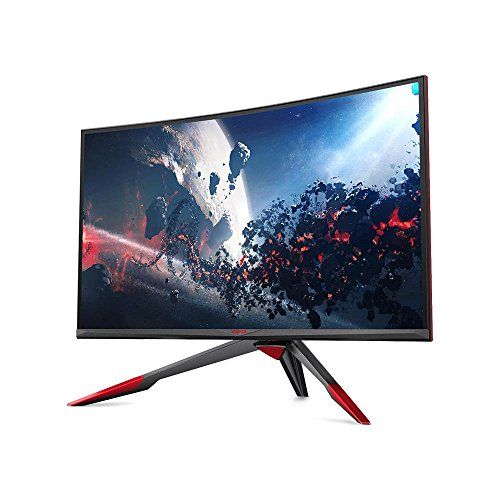Gaming monitors are one of the most essential components for any gaming setup. While a high-performance PC or console is important, the monitor you use can dramatically impact your gaming experience. From the resolution to refresh rates, response times, and panel types, choosing the right monitor can be a daunting task. This blog will break down the key features of gaming monitors to help you make an informed decision.
- Resolution: Clarity and Detail
The resolution of a gaming monitor determines how sharp and clear the image is. Higher resolution means more pixels, resulting in more detailed visuals. Today, there are a few common resolutions available:
1080p (Full HD): The most common resolution, offering a good balance of performance and quality. It’s ideal for gamers who prioritize higher frame rates, especially with less powerful PCs.
1440p (Quad HD): A sweet spot for gamers who want more detail without sacrificing performance. This resolution is often found in mid-range to high-end monitors.
4K (Ultra HD): For the ultimate gaming experience, 4K monitors deliver breathtaking visuals. However, they demand a powerful GPU to run games smoothly at this resolution, making them better suited for high-end PCs or next-gen consoles.
Tip: If you’re playing fast-paced games like FP(First-Person ) or competitive multiplayer games, 1080p may be more practical for higher frame rates.
- Refresh Rate: Smooth Gameplay
The refresh rate indicates how often the monitor refreshes the image per second, measured in Hertz (Hz). A higher refresh rate translates to smoother gameplay, reducing motion blur and ghosting effects. Common refresh rates include:
60Hz: Standard for general use and casual gaming.
120Hz and 144Hz: Popular for competitive gamers who require fluid visuals and quick response times.
240Hz and 360Hz: Preferred by esports professionals and enthusiasts aiming for the ultimate in smoothness.
For most casual gamers, a 144Hz refresh rate provides a great balance between performance and cost, while competitive players will opt for 240Hz or 360Hz.
Tip: Ensure your GPU is capable of driving the refresh rate you choose. There’s no point in having a 240Hz monitor if your GPU can’t output high frame rates.
- Response Time: Avoiding Lag
Response time refers to how quickly a pixel can change from one color to another, often measured in milliseconds (ms). A lower response time reduces motion blur and ghosting, making it crucial for fast-paced games.
1ms to 3ms: Ideal for competitive gaming where precision is key.
4ms to 5ms: Still good for most games, but may not be as sharp as lower response times.
For gamers who play titles like Call of Duty, Fortnite, or Valorant, response time is a vital factor.
- Panel Types: Color Accuracy and Viewing Angles
Gaming monitors come with different types of panels, each with its own advantages and disadvantages. The three main panel types are:
TN (Twisted Nematic): Known for fast response times and low prices. However, TN panels generally have worse color accuracy and viewing angles. Great for competitive gamers on a budget.
IPS (In-Plane Switching): Offers excellent color reproduction and wide viewing angles. IPS panels are ideal for gamers who appreciate vibrant colors and rich visuals, but they tend to have slower response times compared to TN panels.
VA (Vertical Alignment): Offers a good balance of response time, contrast ratios, and color accuracy. VA panels provide deep blacks and are often favored for single-player games, especially in dark environments.
Tip: Choose IPS if you want superior color accuracy and a wider viewing angle, but if response time is your priority, TN may be the better choice.
- G-Sync vs. FreeSync: Synchronizing Frame Rates
Screen tearing can occur when the frame rate of the monitor doesn’t match the frame rate of the GPU. Technologies like NVIDIA G-Sync and AMD FreeSync aim to eliminate this issue by synchronizing the GPU and monitor’s refresh rates.
G-Sync: Exclusively for NVIDIA graphics cards, G-Sync provides a smoother gaming experience by reducing screen tearing and stuttering.
FreeSync: Designed for AMD graphics cards, FreeSync works similarly to G-Sync but is typically more affordable.
Tip: Always pair the correct technology with your GPU for the best experience. If you have an NVIDIA card, opt for G-Sync; if you have an AMD card, look for FreeSync support.
- Curved vs. Flat Monitors: Which is Right for You?
Curved gaming monitors have gained popularity in recent years, offering an experience by matching the natural curve of your eyes. Curved monitors are often larger and can improve focus in wide-screen formats, which is great for racing and flight simulation games.
However, flat monitors are still the standard for many gamers, providing a more traditional and straightforward viewing experience. The decision between curved and flat comes down to personal preference, as both types have their advantages.
- Size: Bigger Isn’t Always Better
Gaming monitors come in a range of sizes, from 24 inches to over 40 inches for ultra-wide displays. The ideal size depends on your available desk space, how far away you sit, and the type of games you play.
24-27 inches: Ideal for most gamers, offering a good balance of screen size and resolution.
32 inches: Larger screens are great for single-player experiences but can be overwhelming for fast-paced multiplayer games.
Ultrawide (34-49 inches): These monitors offer a wider field of view, perfect for simulation games and multitasking, but can be more expensive.
Tip: Ensure that your desk space is large enough for bigger monitors, especially if you plan to go for ultra-wide or 32-inch models.
- Other Considerations
Connectivity: Check if the monitor supports HDMI 2.1, DisplayPort 1.4, or USB-C for high-speed data transfer and better compatibility with modern GPUs and consoles.
Ergonomics and Adjustability: A monitor with height adjustment, tilt, and swivel capabilities will help you maintain a comfortable viewing angle.
Price-to-Performance Ratio: It’s easy to get carried away with high-end features, but make sure your monitor choice fits within your budget and complements the rest of your gaming setup.

